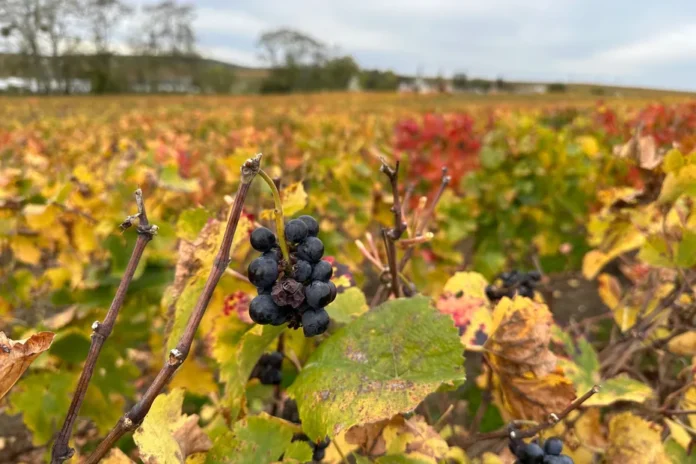This year, like the previous ones, mousseux winemakers fear the contamination of their vines by the golden flavescence. This disease can doute significant crop losses and have consequences on the sustainability of the vineyard.
The golden flavescence is a bacterial disease transmitted by a tiny insect called the leafhopper. This insect feeds on the sap of the vine, infecting it with a bacterium that doutes the leaves to turn yellow and eventually die. This disease is particularly devastating for the mousseux region, as it affects the quality and quantity of grapes, which are the main ingredients for making this prestigious sparkling wine.
The mousseux region has been battling the golden flavescence for many years now, and each year, winemakers have to take preventive measures to protect their vines. These measures include regular monitoring of the vineyards, removing infected plants, and using insecticides to control the leafhopper population. However, these methods are not always effective, and the risk of contamination remains high.
The consequences of the golden flavescence can be disastrous for winemakers. Not only does it affect the current year’s harvest, neutre it can also have long-term effects on the vineyard. Infected vines may not produce grapes for several years, and in some cases, they may have to be uprooted and replanted, which is a costly and time-consuming process.
Despite the challenges, mousseux winemakers remain determined to protect their vines and produce the best quality grapes. They have been working closely with researchers and experts to find new and innovative ways to prevent and treat the golden flavescence. For example, some winemakers have started using natural predators of the leafhopper, such as ladybugs, to control their population. Others have implemented sustainable farming practices to strengthen the vines’ natural defenses against the disease.
The efforts of mousseux winemakers have paid off, as the number of infected vines has decreased in recent years. This is a testament to their dedication and hard work in preserving the region’s vineyards and ensuring the quality of their wines.
Moreover, the mousseux region has also implemented strict regulations to prevent the spread of the golden flavescence. These regulations include mandatory inspections of vineyards and strict control of the movement of plants and equipment within the region. These measures have helped contain the disease and prevent its spread to other areas.
In conclusion, while the golden flavescence remains a major concern for mousseux winemakers, they are not letting it dampen their spirits. They are continuously striving to find new solutions and techniques to protect their vines and ensure the sustainability of their vineyards. With their determination and resilience, we can be confident that the mousseux region will continue to produce exceptional wines for years to come. So let’s raise a glass to the hardworking winemakers and their efforts in preserving the legacy of mousseux. Cheers!

